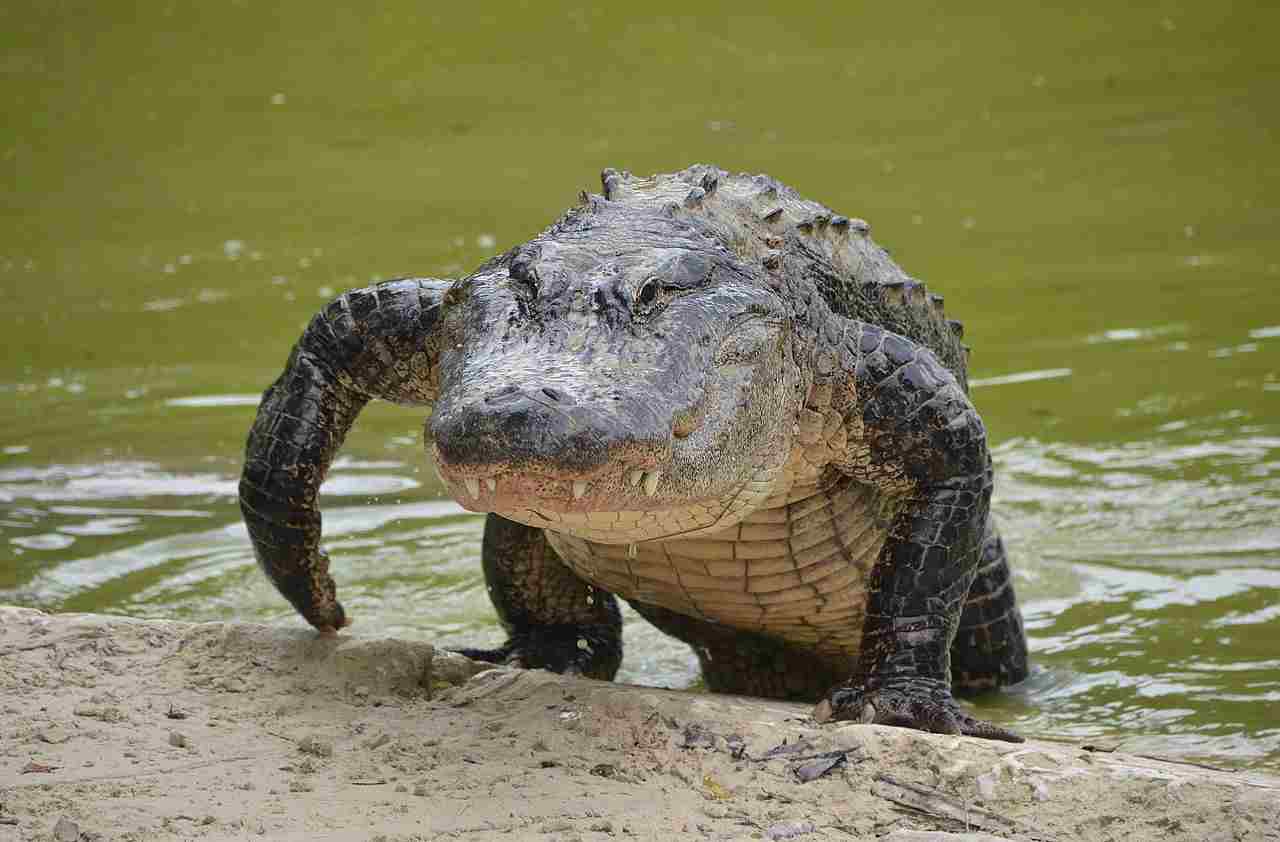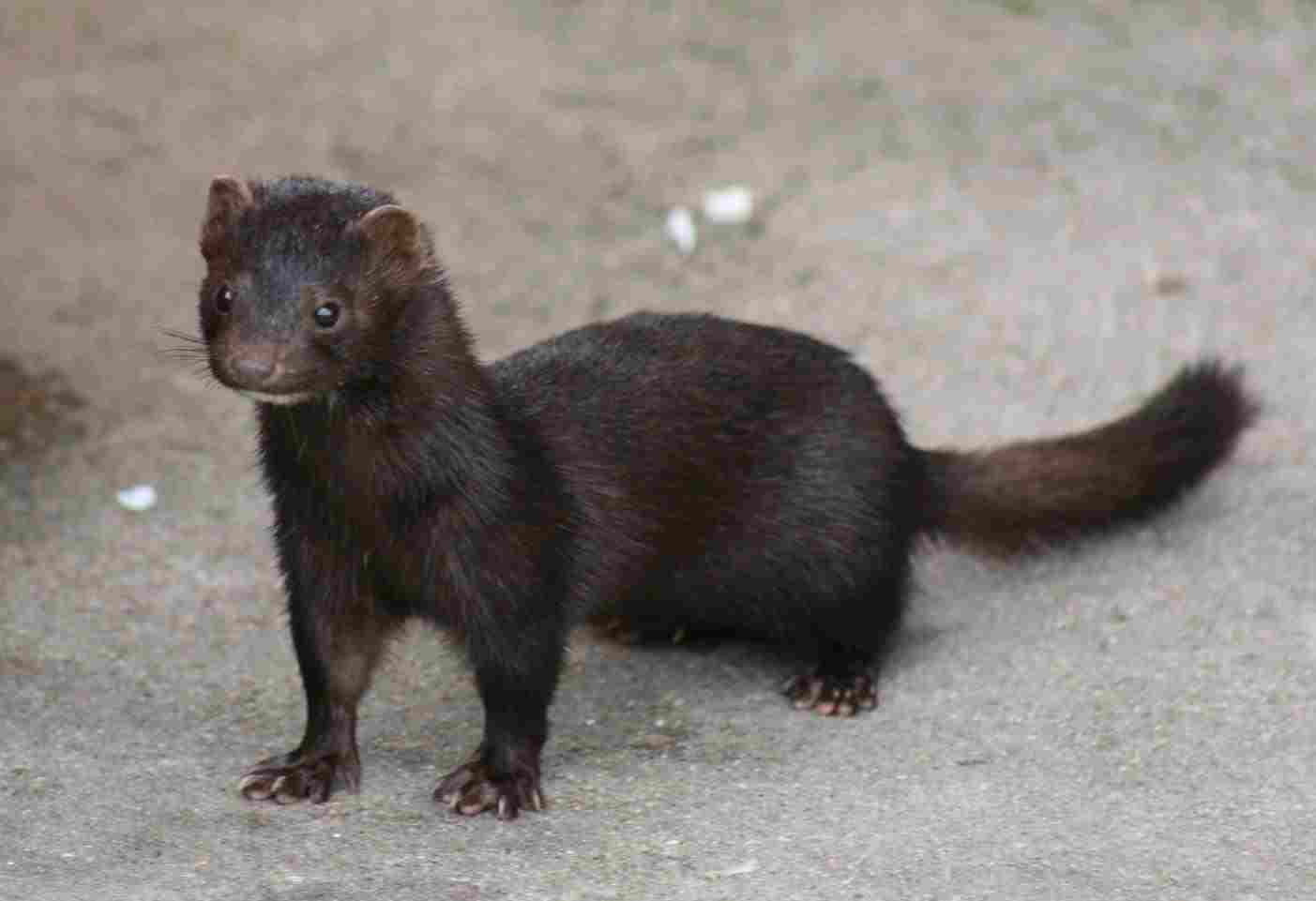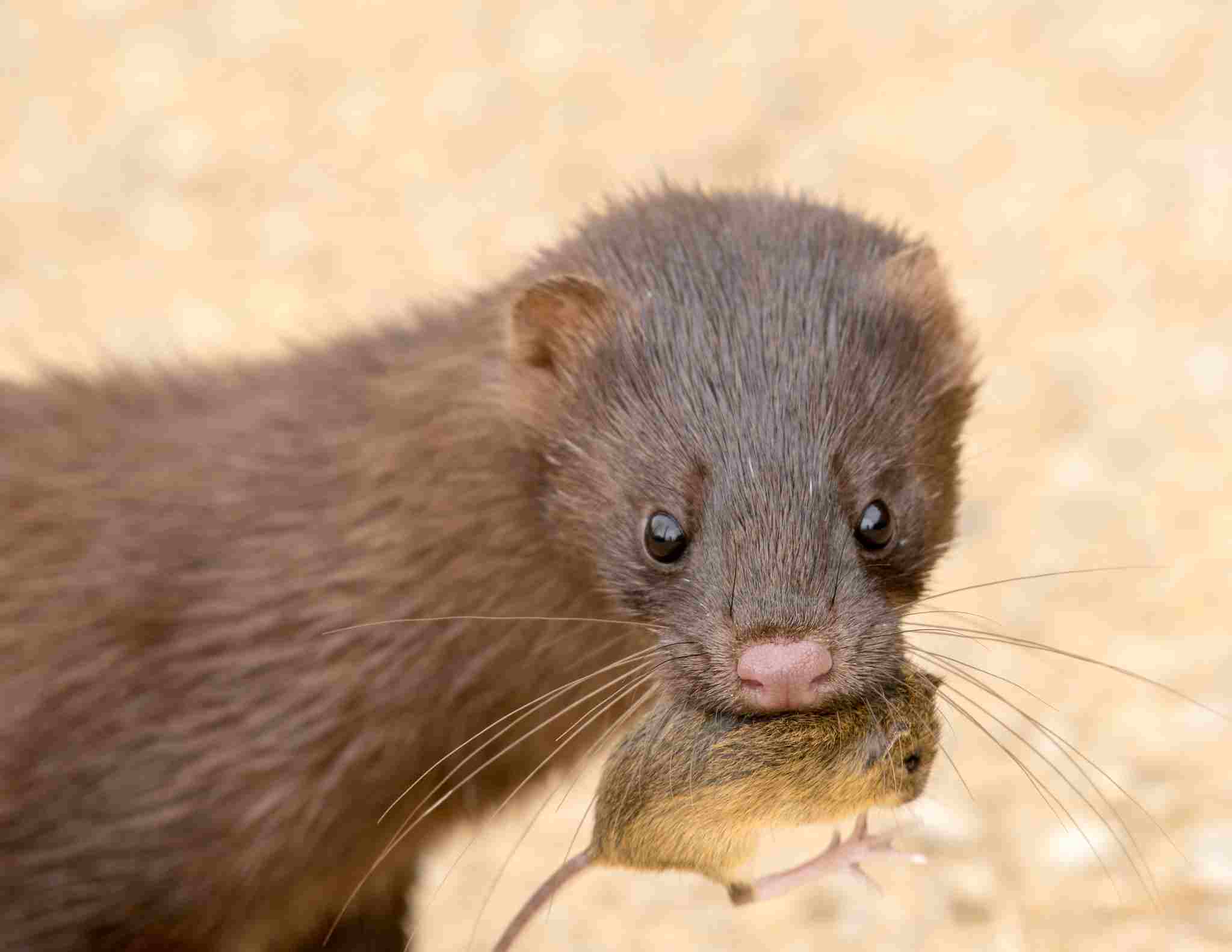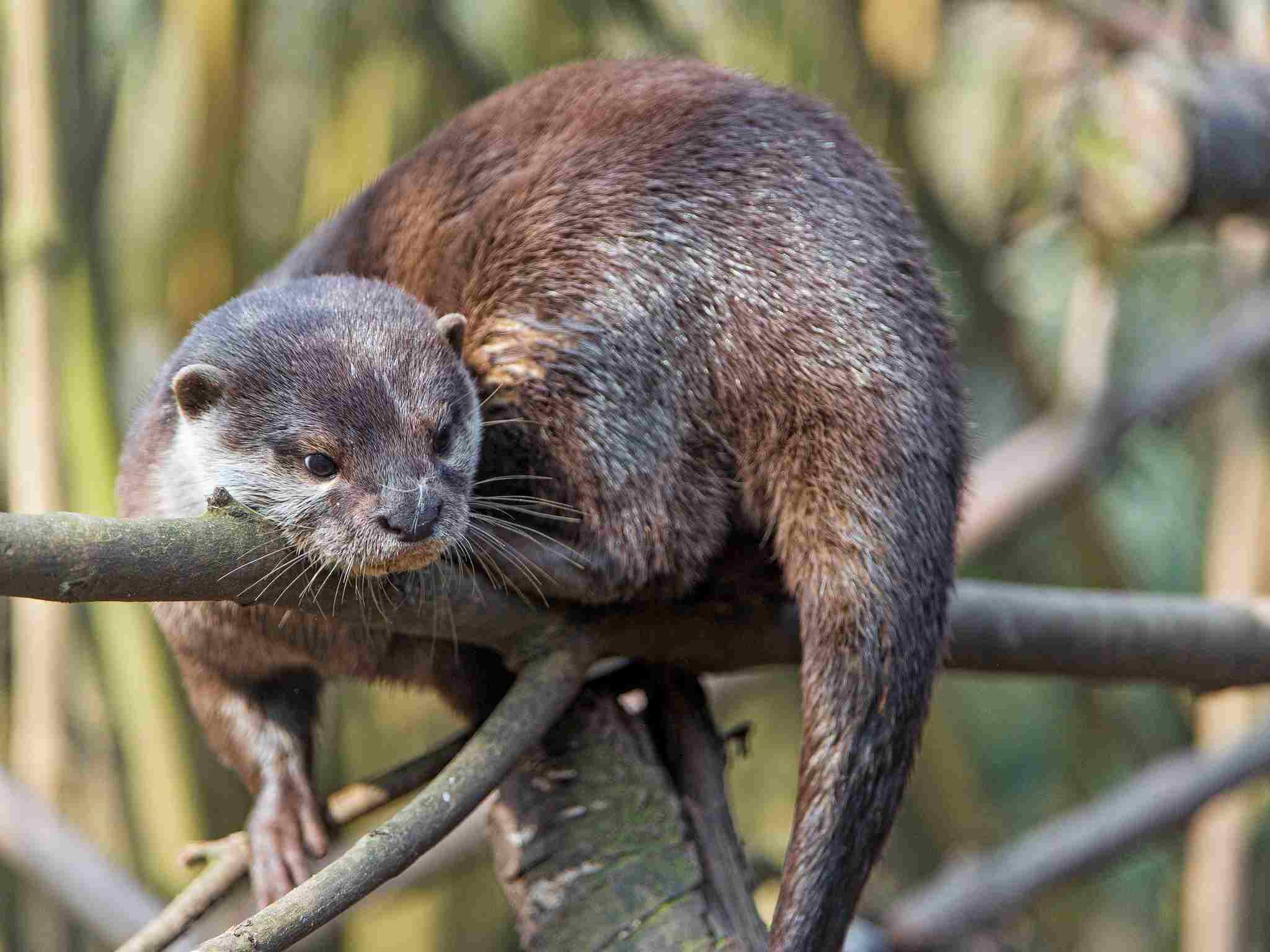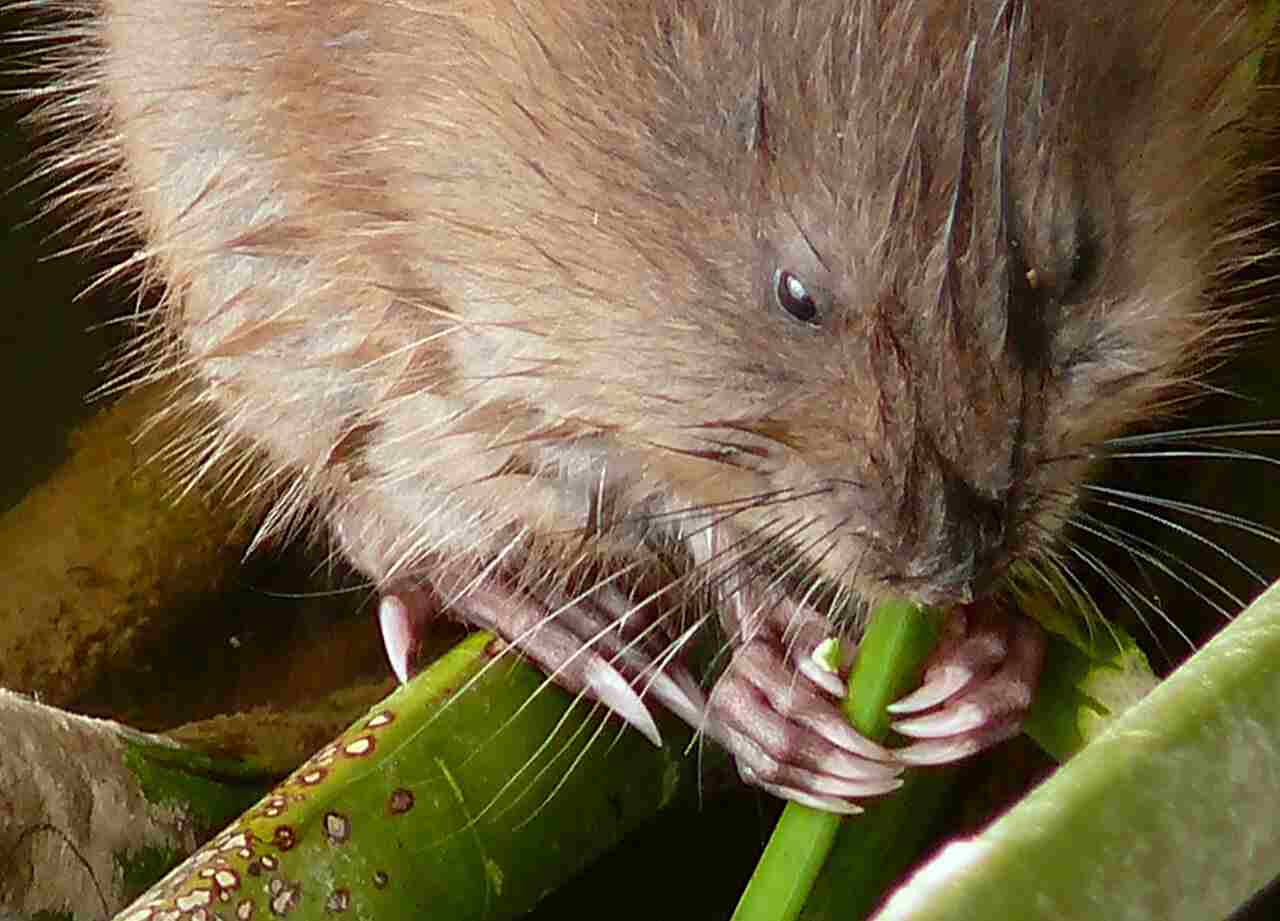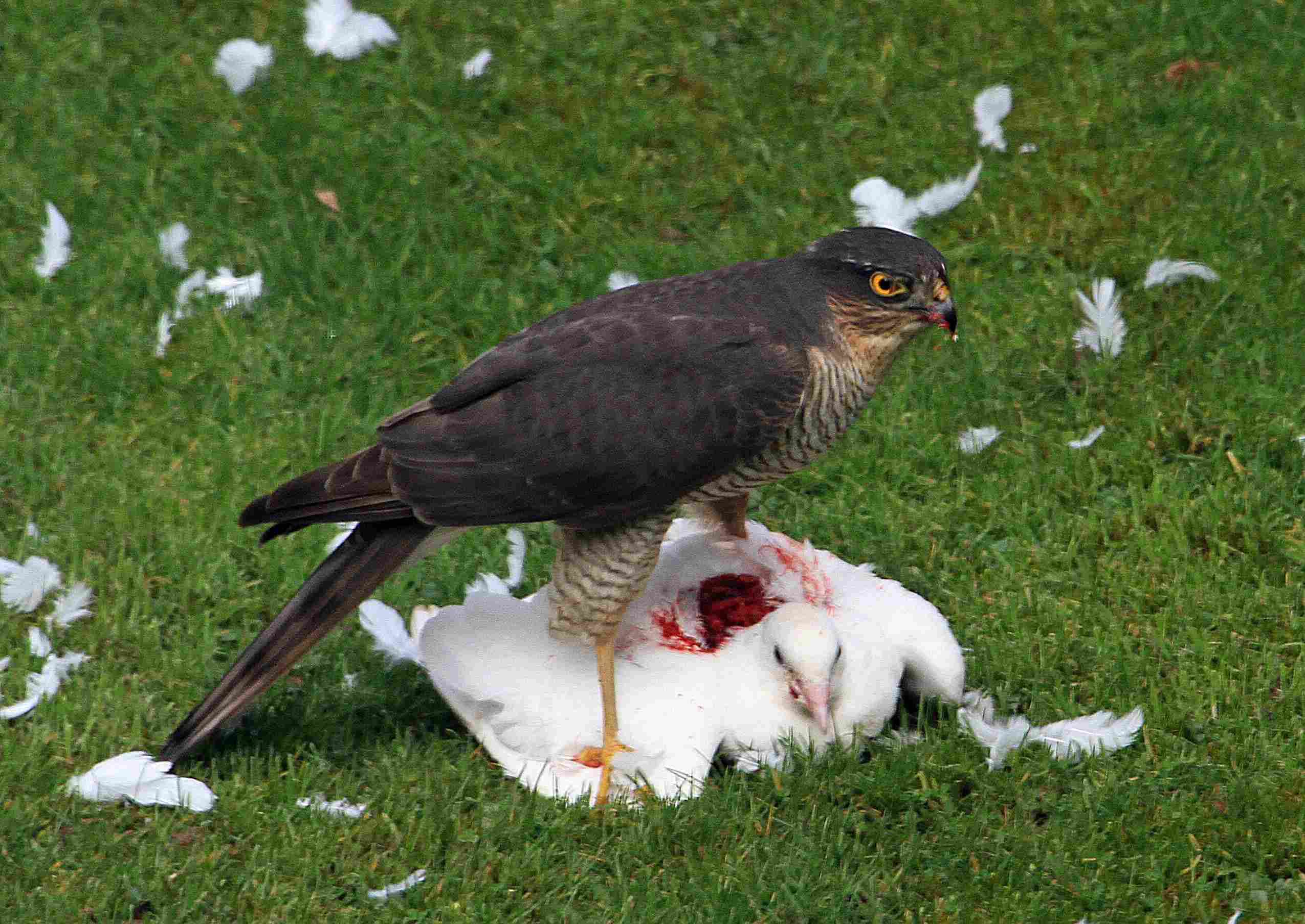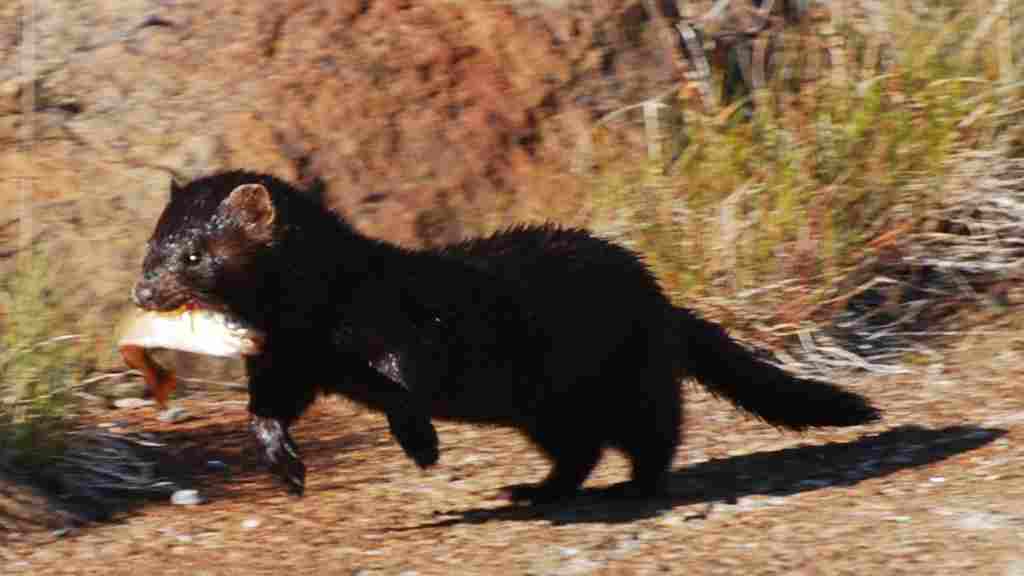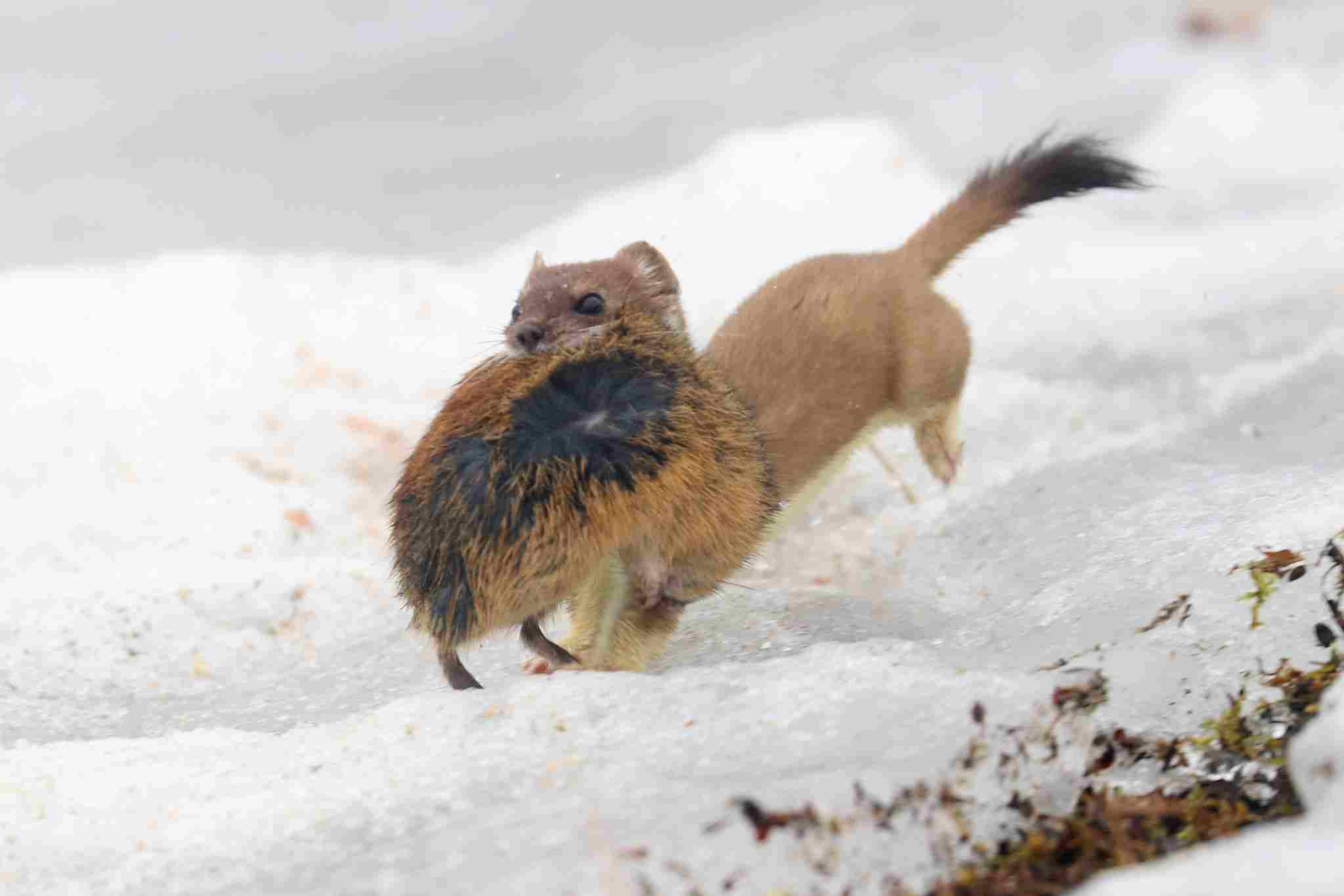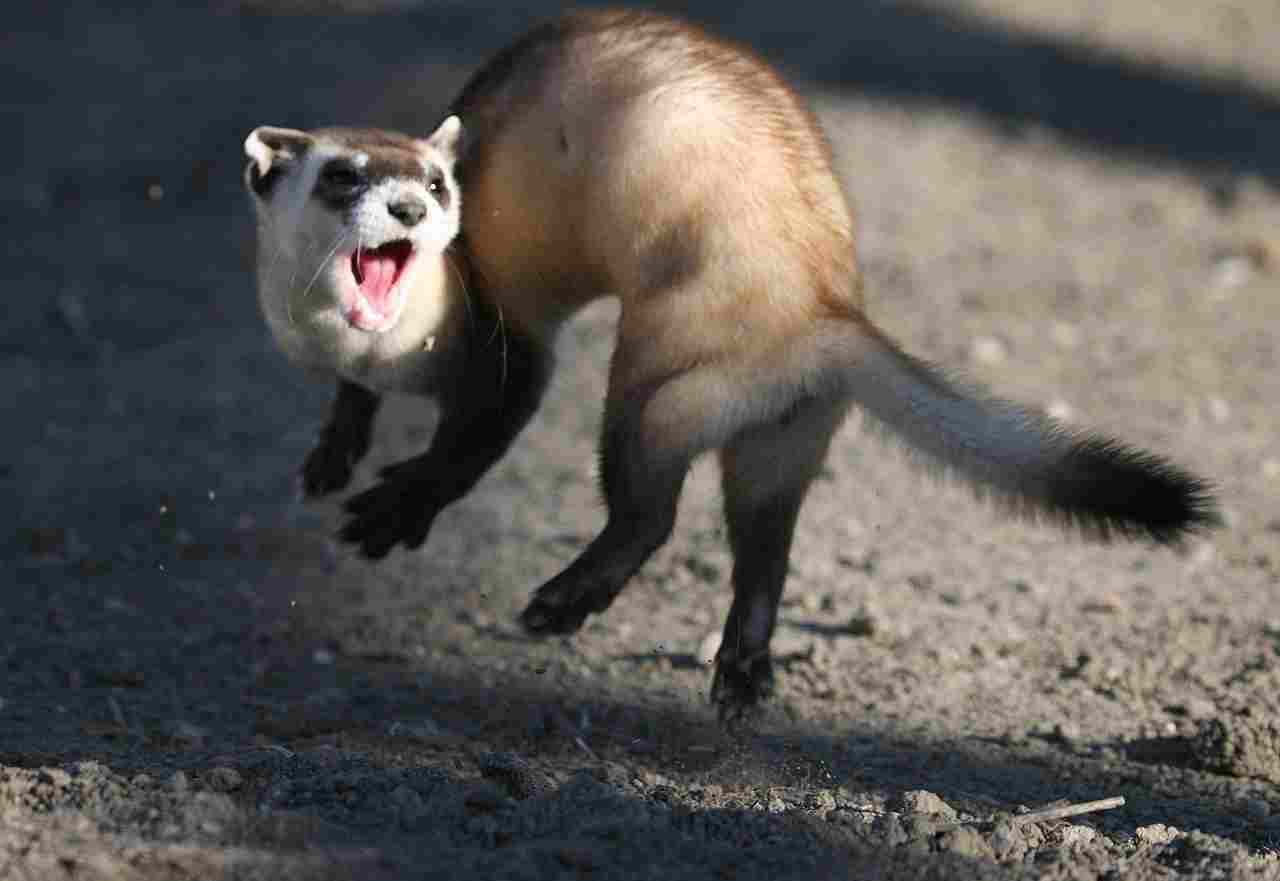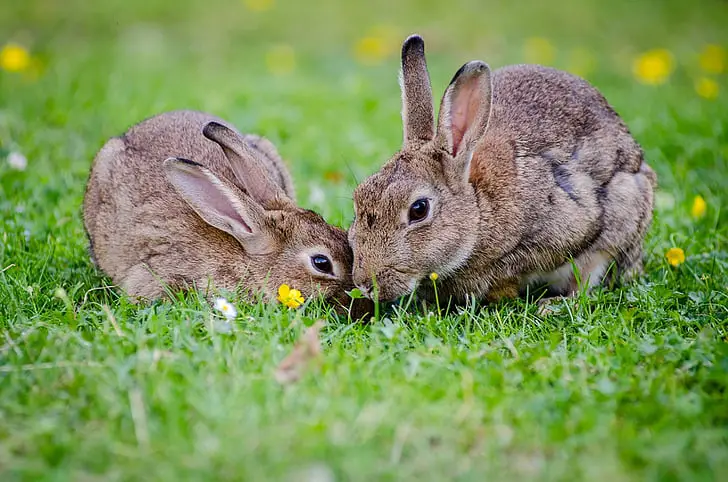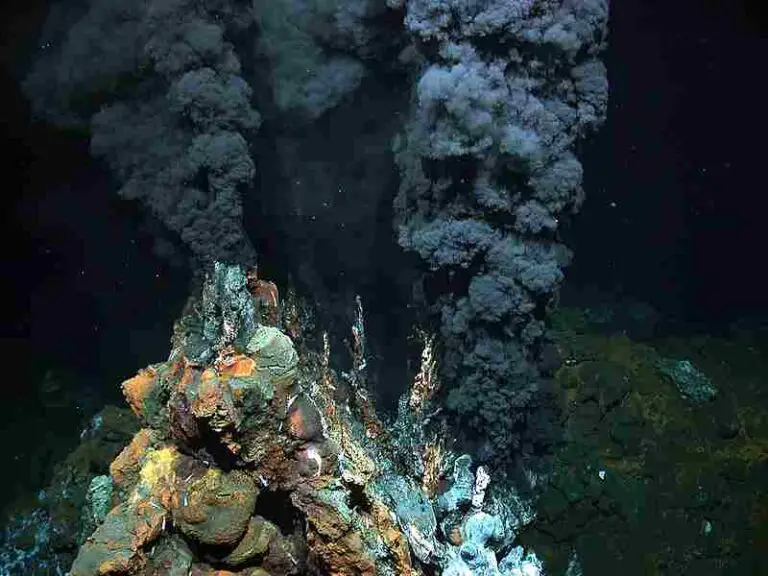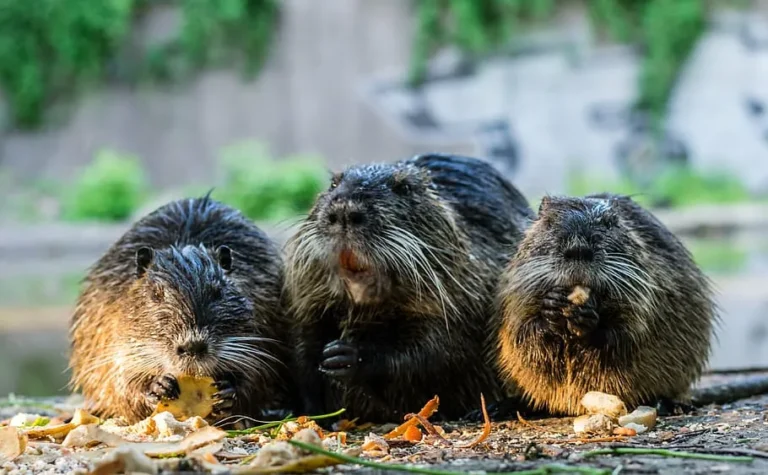13+ Carnivores in Swamps and Their Characteristics
Examples of carnivores in swamps include alligators, crocodiles, snakes like the cottonmouth and Eastern diamondback rattlesnake, birds such as herons and northern harrier hawks, mammals like fishers and otters, and even carnivorous plants like bladderwort. These predators play crucial roles in regulating prey populations, maintaining ecosystem balance, and contributing to nutrient cycling in swamp environments. However, they face threats such as habitat loss, pollution, and human-wildlife conflicts, highlighting the importance of conservation efforts to protect these vital species and their habitats.
1. Mink
Minks, sleek and agile carnivores, are proficient hunters found in various habitats, including swamps. These semi-aquatic mammals possess a lithe body, webbed feet, and water-repellent fur, making them well-suited to navigate through the murky waters of swamp environments. Equipped with sharp claws and formidable teeth, minks are adept at capturing prey both in water and on land.
In swamp ecosystems, minks play a crucial role as top predators, preying upon a diverse array of creatures such as fish, amphibians, crustaceans, and small mammals. Their diet often includes aquatic species like fish and frogs, which are abundant in swamp habitats. Minks are skilled swimmers and can pursue their prey underwater with remarkable speed and agility, using stealth and precision to secure their meals.
These carnivores are primarily nocturnal, utilizing the cover of darkness to stalk their prey and avoid potential predators. However, they are also opportunistic hunters and may hunt during the day if necessary. Their keen senses of sight, smell, and hearing aid them in locating prey amidst the dense vegetation and murky waters of the swamp.
Despite their small size, minks are fearless predators known for their tenacity and ferocity when hunting. They are capable of taking down prey much larger than themselves through ambush tactics or relentless pursuit. In swamp ecosystems, minks serve as vital regulators of prey populations, helping to maintain the balance of the ecosystem through their predation.
2. Bullfrog
Bullfrogs, iconic denizens of swamps and wetlands, are formidable carnivores known for their voracious appetites and powerful hunting abilities. With their large size and strong legs, bullfrogs are adept at both aquatic and terrestrial hunting, making them well-suited to the diverse environments found in swamps.
These amphibians are ambush predators, lying in wait for unsuspecting prey to pass by before launching a lightning-fast attack. Their diet consists of a wide range of prey, including insects, small fish, crustaceans, and even smaller amphibians and reptiles. Bullfrogs are opportunistic feeders, consuming almost anything they can overpower and swallow, contributing to their role as apex predators in swamp ecosystems.
Bullfrogs possess a remarkable ability to consume prey items nearly their own size, thanks to their large mouths and expandable stomachs. Their hunting strategy often involves stealthily approaching their prey and then lunging forward with a sudden burst of speed to capture it in their powerful jaws.
In addition to their role as predators, bullfrogs also serve as prey for larger predators such as birds of prey, snakes, and larger amphibians. Despite their formidable hunting abilities, bullfrog populations can be negatively impacted by habitat loss and pollution, underscoring the importance of conserving swamp ecosystems to ensure the survival of these fascinating carnivores.
3. Heron
Heron species are renowned for their elegant appearance and graceful movements as they wade through the shallow waters of swamps in search of prey. These carnivorous birds are highly adapted hunters, utilizing their long legs, sharp beaks, and keen eyesight to capture a variety of aquatic organisms.
In swamp environments, herons primarily target fish, amphibians, crustaceans, and insects as their main sources of food. Their long necks and spear-like bills enable them to swiftly strike at prey with remarkable accuracy, making them formidable predators in both open water and densely vegetated areas.
Herons are patient hunters, often standing motionless for extended periods, waiting for the perfect opportunity to strike. Their stealth and patience allow them to approach prey without detection, minimizing the chances of escape. Once a suitable target is within reach, herons employ lightning-fast movements to snatch their prey from the water or the surrounding vegetation.
These avian predators play a crucial role in regulating the populations of their prey species, helping to maintain the balance of swamp ecosystems. However, they are also vulnerable to habitat loss and disturbance, as well as pollution of their aquatic habitats, which can have detrimental effects on their populations.
4. Northern Harrier Hawk
Northern harrier hawks, also known as marsh hawks, are raptors uniquely adapted to hunting in open areas such as marshes, wetlands, and swamps. With their distinctive facial disk and keen eyesight, these birds of prey excel at locating and capturing small mammals, birds, reptiles, and amphibians in their watery habitats.
In swamp environments, northern harrier hawks employ a combination of stealth, agility, and speed to pursue their prey. They often fly low over the marsh, scanning the ground below for signs of movement or potential prey. Once a target is spotted, they swoop down with precision, using their sharp talons to grasp and immobilize their quarry.
These aerial predators are particularly skilled at hunting small mammals such as mice, voles, and rabbits, which are abundant in swamp ecosystems. Their ability to cover large areas of marshland in search of prey makes them efficient hunters and important regulators of rodent populations.
Despite their hunting prowess, northern harrier hawks face threats such as habitat loss, pesticide exposure, and collisions with man-made structures. Conservation efforts aimed at preserving and restoring wetland habitats are crucial for ensuring the continued survival of these magnificent birds in swamp ecosystems.
5. American Alligator
The American alligator, a formidable apex predator, is a keystone species in swamp ecosystems, playing a crucial role in maintaining ecological balance. These carnivorous reptiles are well-adapted to life in the swamps, with their armored bodies, powerful jaws, and excellent swimming abilities.
In swamp environments, American alligators primarily feed on a variety of prey, including fish, amphibians, turtles, birds, and mammals. They are opportunistic hunters, employing ambush tactics to surprise their prey and overpower them with a sudden burst of speed. Alligators often lie in wait at the water’s edge or partially submerged, camouflaging themselves among the vegetation until an unsuspecting victim ventures too close.
Once prey is within striking distance, alligators launch a lightning-fast attack, seizing their quarry with their formidable jaws and dragging it beneath the water to drown. Their powerful bite exerts tremendous force, allowing them to consume prey whole or tear it into manageable pieces.
Despite their fearsome reputation, American alligators are also vulnerable to habitat loss, pollution, and illegal hunting. Conservation efforts aimed at protecting wetland habitats and regulating human interactions with these iconic reptiles are essential for ensuring their survival in the wild.
6. Crocodile
Crocodiles, close relatives of alligators, are another group of carnivorous reptiles commonly found in swamp ecosystems around the world. These apex predators are well-adapted to life in the water, with streamlined bodies, powerful tails, and razor-sharp teeth designed for capturing and consuming prey.
In swamp environments, crocodiles feed on a diverse array of prey, including fish, amphibians, birds, mammals, and even other reptiles. They are opportunistic hunters, employing stealth and patience to ambush unsuspecting victims that venture too close to the water’s edge.
Crocodiles are renowned for their patience and ability to remain motionless for extended periods, waiting for the perfect opportunity to strike. When prey comes within striking distance, crocodiles launch a lightning-fast attack, propelling themselves out of the water with incredible speed and grabbing their victim with their powerful jaws.
These apex predators play a crucial role in regulating prey populations and shaping the structure of swamp ecosystems. However, like their alligator counterparts, crocodiles face threats from habitat loss, pollution, and human persecution. Conservation efforts aimed at protecting wetland habitats and mitigating human-crocodile conflicts are essential for ensuring the continued survival of these iconic reptiles.
7. Eastern Diamondback Rattlesnake
The Eastern diamondback rattlesnake, the largest venomous snake species in North America, is an ambush predator commonly found in a variety of habitats, including swamps and wetlands. These formidable carnivores play a vital role in controlling rodent populations and shaping the structure of swamp ecosystems.
In swamp environments, Eastern diamondback rattlesnakes primarily prey on small mammals such as mice, rats, rabbits, and squirrels. They are ambush predators, relying on stealth and patience to lie in wait for unsuspecting prey to pass by before striking with lightning speed.
These venomous snakes possess long fangs and potent venom, which they use to immobilize and subdue their prey. Once bitten, prey animals quickly succumb to the effects of the venom, allowing the rattlesnake to consume them at its leisure.
Despite their fearsome reputation, Eastern diamondback rattlesnakes are also vulnerable to habitat loss, fragmentation, and persecution by humans. Conservation efforts aimed at protecting their swamp habitats and educating the public about the importance of these apex predators are crucial for ensuring their continued survival in the wild.
8. Cottonmouth
The cottonmouth, also known as the water moccasin, is a venomous snake species commonly found in swampy and aquatic habitats throughout the southeastern United States. These carnivorous reptiles play a significant role in swamp ecosystems as top predators, preying on a variety of small mammals, birds, amphibians, and fish.
In swamp environments, cottonmouths are adept hunters both on land and in water. They are semi-aquatic, often found basking on logs or floating vegetation near the water’s edge, where they wait patiently for prey to approach. Cottonmouths possess heat-sensitive pits along their jaws, allowing them to detect the body heat of potential prey even in low light conditions.
When hunting, cottonmouths employ ambush tactics, striking swiftly and injecting venom into their prey with their large, hollow fangs. Their potent venom quickly immobilizes their victims, allowing the snake to consume them at its leisure. Despite their reputation for aggressiveness, cottonmouths are generally shy and will often retreat rather than confront humans or other large animals.
Despite their vital role in swamp ecosystems, cottonmouth populations face threats from habitat loss, pollution, and persecution by humans. Conservation efforts aimed at preserving and restoring wetland habitats are essential for ensuring the continued survival of these fascinating reptiles.
9. Anaconda
Anacondas, the largest snakes in the world by weight, are powerful constrictors found in the swamps and marshes of South America. These carnivorous reptiles play a crucial role in regulating prey populations and shaping the structure of swamp ecosystems as apex predators.
In swamp environments, anacondas primarily prey on a variety of aquatic and semi-aquatic animals, including fish, amphibians, reptiles, birds, and mammals. They are opportunistic hunters, using stealth and ambush tactics to surprise and overpower their prey.
Anacondas are best known for their ability to constrict their victims, wrapping their muscular bodies around them and squeezing with tremendous force until they suffocate. Once their prey is subdued, anacondas consume it whole, often swallowing prey much larger than themselves.
Despite their fearsome reputation, anacondas are generally shy and elusive, preferring to avoid confrontation with humans. However, habitat loss, poaching, and the exotic pet trade pose significant threats to their survival. Conservation efforts aimed at protecting their swamp habitats and regulating human interactions with these iconic reptiles are crucial for ensuring their continued existence in the wild.
10. Eastern Coral Snake
The Eastern coral snake, with its vibrant red, yellow, and black bands, is one of the most venomous snake species found in the southeastern United States. Despite their small size, these carnivorous reptiles play a significant role in swamp ecosystems as predators of small vertebrates and invertebrates.
In swamp environments, Eastern coral snakes primarily prey on small reptiles, amphibians, and insects, using their potent venom to immobilize their victims. They are nocturnal hunters, relying on stealth and camouflage to ambush unsuspecting prey under the cover of darkness.
Despite their potent venom, Eastern coral snakes are generally shy and reclusive, preferring to avoid confrontation with humans or other large animals. They are often mistaken for non-venomous milk snakes or scarlet king snakes due to their similar coloration, but can be distinguished by the order of their colored bands.
Despite their low risk to humans, Eastern coral snakes face threats from habitat loss, fragmentation, and persecution by humans. Conservation efforts aimed at protecting their swamp habitats and educating the public about the importance of these elusive reptiles are crucial for ensuring their continued survival in the wild.
11. Fisher
The fisher, a member of the weasel family, is a carnivorous mammal found in forested areas, including swamps and wetlands, across North America. These agile and opportunistic hunters play a crucial role in controlling rodent populations and shaping the structure of swamp ecosystems.
In swamp environments, fishers primarily prey on small mammals such as mice, rats, squirrels, and rabbits, but they are also known to consume birds, insects, and occasionally fish. They are adept climbers and agile hunters, using their sharp claws and keen senses to pursue prey both on the ground and in the trees.
Fishers are solitary animals, typically hunting alone and covering large territories in search of food. They are crepuscular and nocturnal hunters, active during the early morning and late evening hours when their prey is most active. Fishers use stealth and surprise to ambush their prey, relying on their speed and agility to catch them before they can escape.
Despite their relatively small size, fishers are fearless predators known for their tenacity and ferocity when hunting. They have been observed taking down prey much larger than themselves, using their sharp teeth and powerful jaws to deliver a fatal bite to the neck or head.
Conservation efforts aimed at preserving and restoring forested habitats, including swamps and wetlands, are crucial for ensuring the continued survival of fishers and their important role in regulating prey populations in these ecosystems.
12. Bladderwort
Bladderwort is a carnivorous aquatic plant found in swampy and wetland habitats around the world. These fascinating plants play a unique role in swamp ecosystems as predators of small aquatic organisms, including protozoa, small crustaceans, and insect larvae.
Bladderwort possesses specialized structures called bladder traps, which are underwater sacs that create a vacuum when triggered by prey. When an unsuspecting organism brushes against trigger hairs on the bladder trap, it causes the trap to rapidly open, sucking in water along with the prey. The trap then closes tightly, preventing the escape of the captured organism.
Bladderwort is highly efficient at capturing prey, with some species capable of capturing and digesting prey within milliseconds of triggering the bladder trap. This carnivorous behavior allows bladderwort to supplement its nutrient intake in nutrient-poor aquatic environments where other sources of nutrients may be limited.
Despite their important role in swamp ecosystems, bladderwort populations can be negatively impacted by habitat destruction, pollution, and invasive species. Conservation efforts aimed at preserving and restoring wetland habitats are essential for ensuring the continued survival of bladderwort and other carnivorous plants in the wild.
13. Dragonfly
Dragonflies, with their iridescent wings and agile flight, are iconic insects commonly found in swamp and wetland habitats around the world. These carnivorous insects play a vital role in swamp ecosystems as predators of small flying insects, contributing to the control of insect populations and maintaining ecological balance.
In swamp environments, dragonflies primarily prey on a variety of small flying insects such as mosquitoes, flies, gnats, and midges. They are highly skilled hunters, utilizing their exceptional vision, speed, and maneuverability to capture prey in mid-air.
Dragonflies are opportunistic predators, patrolling their territories and actively hunting for prey during the daylight hours. They are known for their acrobatic flight maneuvers, including sharp turns, dives, and aerial pursuits, which enable them to outmaneuver and capture their prey with remarkable efficiency.
These voracious predators play a crucial role in controlling insect populations in swamp ecosystems, helping to reduce nuisance pests and prevent outbreaks of disease-carrying insects such as mosquitoes. Their presence also serves as an important food source for other organisms, including birds, fish, and amphibians.
Despite their importance in swamp ecosystems, dragonfly populations can be negatively impacted by habitat loss, pollution, and climate change. Conservation efforts aimed at preserving and restoring wetland habitats are essential for ensuring the continued survival of dragonflies and their important role as predators of flying insects.
14. Otter
Otters, charismatic and playful mammals, are semi-aquatic carnivores commonly found in swamp and wetland habitats around the world. These agile hunters play a vital role in swamp ecosystems as top predators, helping to regulate prey populations and maintain ecological balance.
In swamp environments, otters primarily prey on fish, crustaceans, amphibians, and aquatic invertebrates, using their keen senses and streamlined bodies to hunt both underwater and on land. They are highly skilled swimmers, capable of diving to great depths and pursuing prey with remarkable speed and agility.
Otters are opportunistic hunters, employing a variety of hunting techniques depending on the availability of prey and the characteristics of their habitat. They may hunt individually or cooperatively in groups, using teamwork to encircle and capture schools of fish or to flush out prey from hiding places.
These sociable mammals are also known for their playful behavior, often engaging in activities such as sliding down muddy banks, wrestling with each other, and using objects such as rocks or sticks to play games. Despite their playful nature, otters are formidable predators, capable of taking down prey much larger than themselves through coordination and persistence.
Conservation efforts aimed at preserving and restoring wetland habitats are crucial for ensuring the continued survival of otters and their important role as top predators in swamp ecosystems. By protecting otter populations, we can help maintain the health and balance of these valuable wetland ecosystems for future generations.
*Summary
-
Mink:
-
Sleek, semi-aquatic mammals adept at hunting in swamps.
-
Top predators, preying on fish, frogs, and small mammals.
-
Nocturnal hunters, employing stealth and speed to capture prey.
-
-
Bullfrog:
-
Formidable amphibians found in swamps, with powerful jaws.
-
Ambush predators, targeting insects, fish, and small animals.
-
Employing stealth and lightning-fast strikes to capture prey.
-
-
Heron:
-
Elegant birds wading in swamps, skilled at capturing aquatic prey.
-
Spear-like bills used to strike fish, amphibians, and crustaceans.
-
Patient hunters, waiting motionless for prey before striking.
-
-
Northern Harrier Hawk:
-
Raptors adapted for hunting in open marshes and wetlands.
-
Scanning ground for small mammals, birds, reptiles, and amphibians.
-
Employing speed and agility to capture prey with sharp talons.
-
-
American Alligator:
-
Apex predators in swamp ecosystems, feeding on diverse prey.
-
Ambush hunters, using powerful jaws to capture and drown prey.
-
Vulnerable to habitat loss and human activities.
-
-
Crocodile:
-
Close relatives of alligators, preying on various swamp dwellers.
-
Employing stealth and ambush tactics to capture prey.
-
Key predators in regulating prey populations in swamps.
-
-
Eastern Diamondback Rattlesnake:
-
Venomous snakes hunting small mammals in swamp habitats.
-
Ambush predators, using potent venom to subdue prey.
-
Important for controlling rodent populations in swamps.
-
-
Cottonmouth:
-
Venomous snakes found in swampy areas, preying on small animals.
-
Semi-aquatic, utilizing ambush tactics near water’s edge.
-
Crucial predators, but vulnerable to habitat loss and pollution.
-
-
Anaconda:
-
Largest snakes, powerful constrictors preying on swamp creatures.
-
Ambush hunters, targeting aquatic and semi-aquatic animals.
-
Facing threats from habitat loss and human activities.
-
-
Eastern Coral Snake:
-
Highly venomous snakes hunting small vertebrates in swamps.
-
Nocturnal ambush predators, preferring to avoid confrontation.
-
Important for controlling prey populations in swamp ecosystems.
-
-
Fisher:
-
Agile mammals hunting rodents and small animals in swamps.
-
Solitary hunters, covering large territories for food.
-
Crucial for controlling rodent populations in swamps.
-
-
Bladderwort:
-
Carnivorous aquatic plants capturing small organisms in swamps.
-
Utilizing bladder traps to suck in and digest prey.
-
Important for nutrient cycling in swamp ecosystems.
-
-
Dragonfly:
-
Predatory insects feeding on flying insects in swamp environments.
-
Agile hunters, employing speed and maneuverability to capture prey.
-
Crucial for controlling insect populations in swamps.
-
-
Otter:
-
Sociable mammals preying on fish and aquatic invertebrates in swamps.
-
Agile swimmers, hunting both underwater and on land.
-
Important top predators, helping to maintain ecological balance in swamps.
-
| Carnivores in Swamps | Description |
| Mink |
Sleek, semi-aquatic mammals adept at hunting in swamps. Top predators, preying on fish, frogs, and small mammals. Nocturnal hunters, employing stealth and speed to capture prey.
|
| Bullfrog |
Formidable amphibians found in swamps, with powerful jaws. Ambush predators, targeting insects, fish, and small animals. Employing stealth and lightning-fast strikes to capture prey.
|
| Heron |
Elegant birds wading in swamps, skilled at capturing aquatic prey. Spear-like bills used to strike fish, amphibians, and crustaceans. Patient hunters, waiting motionless for prey before striking.
|
| Northern Harrier Hawk |
Raptors adapted for hunting in open marshes and wetlands. Scanning ground for small mammals, birds, reptiles, and amphibians. Employing speed and agility to capture prey with sharp talons.
|
| American Alligator |
Apex predators in swamp ecosystems, feeding on diverse prey. Ambush hunters, using powerful jaws to capture and drown prey. Vulnerable to habitat loss and human activities.
|
| Crocodile |
Close relatives of alligators, preying on various swamp dwellers. Employing stealth and ambush tactics to capture prey. Key predators in regulating prey populations in swamps.
|
| Eastern Diamondback Rattlesnake |
Venomous snakes hunting small mammals in swamp habitats. Ambush predators, using potent venom to subdue prey. Important for controlling rodent populations in swamps.
|
| Cottonmouth |
Venomous snakes found in swampy areas, preying on small animals. Semi-aquatic, utilizing ambush tactics near water’s edge. Crucial predators, but vulnerable to habitat loss and pollution.
|
| Anaconda |
Largest snakes, powerful constrictors preying on swamp creatures. Ambush hunters, targeting aquatic and semi-aquatic animals. Facing threats from habitat loss and human activities.
|
| Eastern Coral Snake |
Highly venomous snakes hunting small vertebrates in swamps. Nocturnal ambush predators, preferring to avoid confrontation. Important for controlling prey populations in swamp ecosystems.
|
| Fisher |
Agile mammals hunting rodents and small animals in swamps. Solitary hunters, covering large territories for food. Crucial for controlling rodent populations in swamps.
|
| Bladderwort |
Carnivorous aquatic plants capturing small organisms in swamps. Utilizing bladder traps to suck in and digest prey. Important for nutrient cycling in swamp ecosystems.
|
| Dragonfly |
Predatory insects feeding on flying insects in swamp environments. Agile hunters, employing speed and maneuverability to capture prey. Crucial for controlling insect populations in swamps.
|
| Otter |
Sociable mammals preying on fish and aquatic invertebrates in swamps. Agile swimmers, hunting both underwater and on land. Important top predators, helping to maintain ecological balance in swamps.
|
Related FAQs
1. What are some common predators found in swamp ecosystems?
Predators commonly found in swamp ecosystems include alligators, crocodiles, snakes such as the cottonmouth and Eastern diamondback rattlesnake, birds of prey like herons and northern harrier hawks, mammals like the fisher and otter, and even carnivorous plants like bladderwort.
2. What role do predators play in swamp ecosystems?
Predators in swamp ecosystems help regulate prey populations, prevent overgrazing, and maintain the balance of the ecosystem. They also contribute to nutrient cycling by controlling populations of herbivores and scavengers, which can impact plant growth and decomposition processes.
3. How do predators hunt in swamp environments?
Predators in swamp environments use a variety of hunting techniques depending on their species and prey. Ambush predators like alligators and cottonmouths lie in wait for prey to come within striking distance, while hunters like herons and dragonflies actively pursue prey. Some predators, like fishers and otters, are agile and opportunistic, hunting both on land and in water.
4. What are some threats to predator populations in swamps?
Predators in swamp ecosystems face threats such as habitat loss and fragmentation due to human development, pollution of waterways, depletion of prey populations due to overfishing or hunting, and conflicts with humans. Climate change can also impact predator populations by altering habitat conditions and prey availability.
5. How can we protect predator populations in swamps?
Conservation efforts aimed at preserving and restoring wetland habitats are crucial for protecting predator populations in swamps. This includes measures such as habitat restoration, pollution control, regulation of human activities, and education about the importance of predators in maintaining healthy ecosystems. Additionally, sustainable management of prey populations and reducing human-wildlife conflicts can help ensure the survival of predators in swamp environments.
